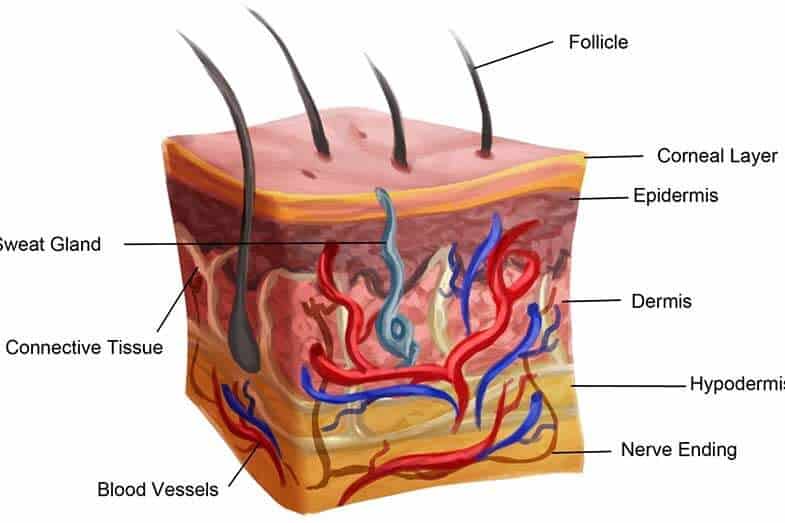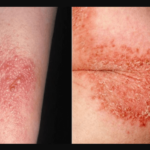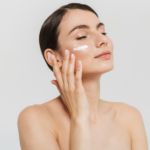Amazingly, the skin has the ability to regenerate and produce new skin. How long does this take? How often does human skin replace itself with a new layer?
It takes 27 days on average for the skin to replace itself with a new layer. Every day your skin sheds, and this process is called exfoliating. Dead skin piles on your skin every single day. This process of birth and rebirth continues throughout your whole life.
The skin is the body’s biggest order and also the one most taken for granted. Though it may seem very sensitive, the skin is the body’s first major defense against the elements. Just like any vital organ of the body, proper care is very important to keep it from premature aging.
There is so much to learn about your skin that will fascinate you and make you appreciate it even more. Read on to learn more about how often skin replaces itself with a new layer and how that process works.
How Often Does Human Skin Replace Itself with a New Layer?
The skin is a combination of water, lipids, protein, and minerals. And while the skin is quite sensitive, it has a very tough job of protecting the body from infections and harsh elements, including UV rays. One way human skin stays so tough is it replaces itself often.
The skin is designed to shed and replace itself. So your skin constantly changes. Human skin replaces itself with a new layer every 27 days on average. You can actually achieve a new, youthful glow every month! However, if you don’t know how to take care of your skin, premature aging and other skin conditions will strip you of that.
About the Human Skin

The skin is made up of three layers; the epidermis, dermis, and hypodermis. These three layers serve as our shield to keep infections at bay. It also helps the body temperature to remain normal.
The epidermis is a layer that has the capacity to regenerate. It keeps shedding until all the skin has been fully replaced by new ones. The thing about this regeneration is that it slows down as we age. This is why we can’t hang on to the youthful skin we had years ago, no matter what we do. But you can slow down how fast your skin ages through the years.
The dermis is the second layer where the blood vessels are attached. The blood vessels, as we all know, are the ones responsible for carrying oxygen and other vital nutrients to different organs. The dermis is made up of elastic fibers and collagen, so it moves freely and is flexible.
The hypodermis, on the other hand, is where the larger blood vessels and vital nerves are attached. This is composed of fatty and connective tissues that serve as an insulator.
The skin that we often neglect and take for granted is not just for vanity purposes, after all, leading us to the next topic on how to take care of our skin. After all, this large organ is not just for aesthetics but serves a more important purpose.
How Does Human Skin Replace Itself with a New Layer?
The idea of your skin replacing itself with a new layer every 27 days is really amazing! But how does it work? Well, our skin, as you know, has three layers, and about 19 million skin cells are found in every inch of your body. Over time these skin cells grow old and die on the surface.
Every day your body will get rid of about thirty to forty thousand old skin particles. You may not be able to see all these particles, but we shed flakes of dead skin all the time. People leave a trail of dead skin wherever they go!
But as fast as these skin cells die, they also replace themselves with new ones even before all the dead skin has been shed. Did you know that 18 to 23 layers of dead skin is what you can see on top of the epidermis?
This is why you will notice patches of discoloration on your skin. You should help the process along by exfoliating with a chemical exfoliant or by manually exfoliating. You have to aid the replacement of new skin to get that supple, new skin on top.
The skin cell will start off as fat under the epidermis. They push their way to the top, flattens out as they reach the surface. It then slowly dries out and turns to flakes. This full process of the skin replacing itself with a new layer is complete in about 27 days, or 1 month.
As people grow old, though, this process slows down as well. This is why you need to take care of your skin properly. Our skin is very important and doesn’t deserve to be neglected.
How to Care for Your Skin and Help the Replacement Process
You shouldn’t just wait for your skin to replace itself every month. You should help it along by exfoliating and in many other ways. See the below tips for how to help your skin replace itself with a new layer.
Thoroughly cleanse your skin. You should bathe or shower twice daily to keep your skin clean. Regular bathing will help get rid of the dead skin. Refrain from going to bed without removing your make-up. You must properly clean your face and body before you hit the sack. However, you must limit your bath or shower time, especially if you use hot water. Long showers can also strip your skin of the natural oils necessary to keep the skin from drying out.
Use a gentle soap. As much as possible, stay away from scented soaps. They can be harmful to your skin. There are so many soaps with all-natural ingredients that you can choose from. Some people opt for a gentler body wash that has less pH level than soaps. A gentle soap will also help exfoliate the skin, removing dead skin cells, so new cells can replace the old.
Eat a balanced diet. A healthy and nutritious diet will greatly benefit your skin. Stay away from foods high in refined sugar and processed foods.
Drink lots of water. Water will not only hydrate you physically but will also keep your skin from drying. It will keep its suppleness and firm texture.
Use moisturizers. No matter what age, using moisturizer will always be beneficial to your skin. So moisturize every day.
Sunscreen. The rays of the sun are relentless and very damaging to your skin. Use sunscreen every day. An SPF 50 is best recommended to offer the best protection.
Regular exercise. Regular exercise will help your body and greatly benefit your skin as well. A 30-minute brisk walk is all you need to keep those blood flowing. If you can, work up a sweat as the sweat will help the skin replace itself with a new layer as it gets rid of toxins faster.
Stay away from the sun. Even with sunscreen, you can’t totally avoid sun damage. Avoid being in direct sunlight as much as possible. If it can’t be avoided, use protective pieces of clothing and a hat over your head.
Additional Nutrients That Benefit Your Skin
Even though the skin is able to regenerate itself, there are certain vitamins that you can take in order to help your skin stay healthy.
Collagen supplements can help increase hydration on the skin. People who are over 30 years of age will greatly benefit from them. Well-hydrated skin slows down deep wrinkle formation. You can take collagen in the form of pills or powder drinks.
Vitamin A is an important component in maintaining and developing epithelial cells; this is where skin regeneration occurs. This is based on a study by the American Journal of Clinical Dermatology which led them to prescribe vitamin A to help minimize and prevent acne and wrinkles.
Vitamin C helps in the production of natural collagen protein in our connective tissues, including the skin. It’s not only good for the immune system but also for your skin. And you won’t get vitamin C overdose because your body consumes a lot of it to supply your unending need for vitamin C.
Zinc is responsible for repairing, regenerating, and promoting healing. We will get scrapes and cuts all throughout, but it will keep closing up and growing back due to zinc.
Hyaluronic Acid is found within our connective tissues. This is what keeps your skin hydrated. Although 50% of the hyaluronic acid produced by our body is found in the skin cells, we need to supplement it because, over time, this gets depleted.
Conclusion — How Often Does Human Skin Replace Itself with a New Layer?
How often does human skin replace itself with a new layer? Healthy human skin replaces itself with a new layer in approximately 27 days. It follows a continuous process of birth and rebirth of new skin throughout your life. As people grow older, this process may slow down or get impaired. This is why it is important to properly care for our skin.
Regular cleaning and care will go a long way. Observing a healthy diet and lifestyle also helps.
Understanding the science behind your skin is important in order to appreciate it. I hope this article also made you realize the importance of caring for your skin, however simple it may seem. Our skin will clothe us for the rest of our lives; we might as well take very good care of it to keep it from aging prematurely.

![Neutral Skin Tone Defined [and Best Colors for Neutral Skin] neutral skin tone](https://skincaregeeks.com/wp-content/uploads/2021/05/neutral-skin-tone-150x150.png)







